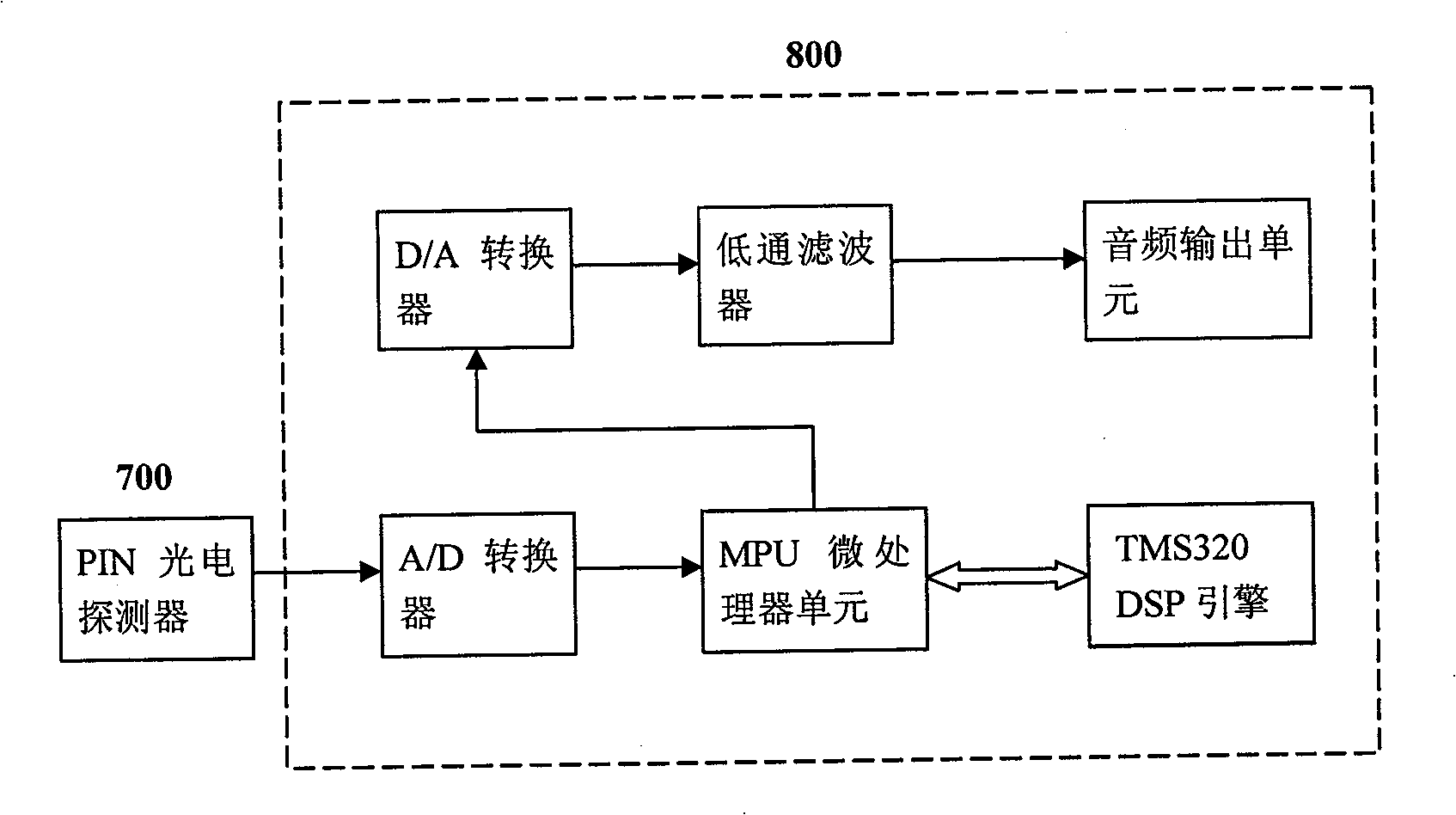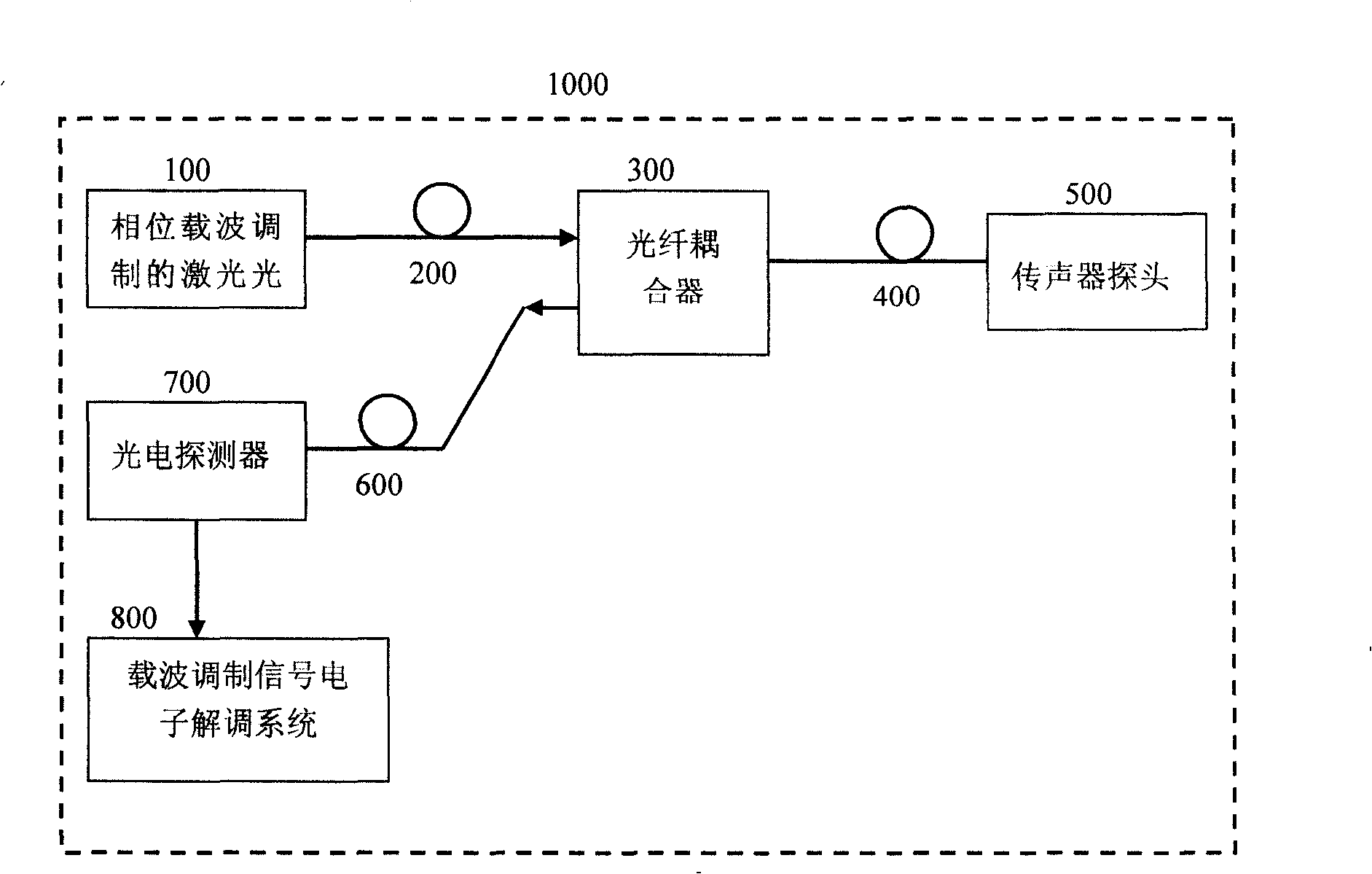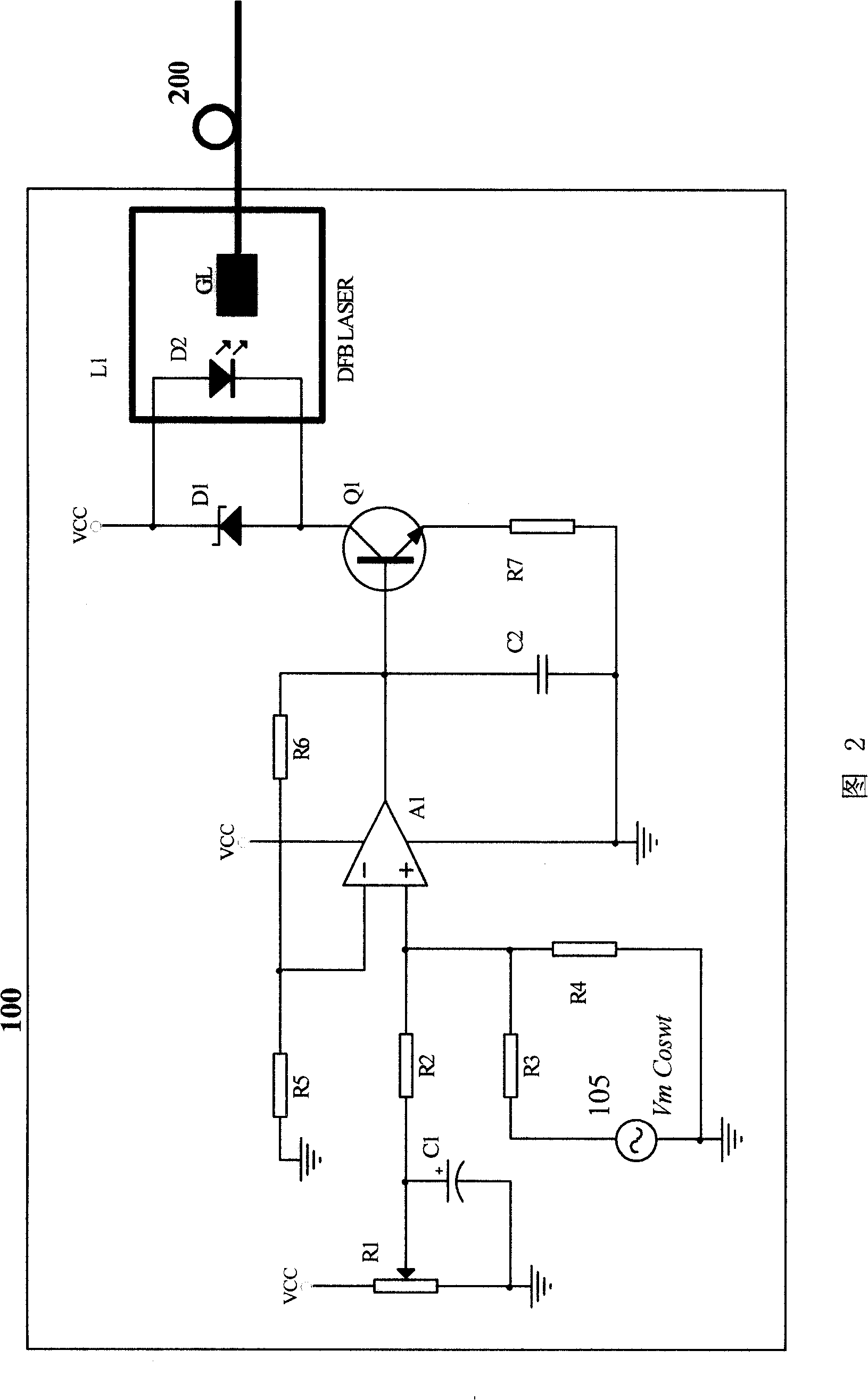Optical fiber silicon microphone system based on phase carrier modulation
A phase carrier, micro-microphone technology, used in sensors, lasers, phonon exciters, etc.
- Summary
- Abstract
- Description
- Claims
- Application Information
AI Technical Summary
Problems solved by technology
Method used
Image
Examples
Embodiment 1
[0032]The working principle of the present invention is like this: described optical fiber MEMS microphone probe 500 at least comprises a gradient lens (also called self-focusing lens) and a MEMS vibrating membrane with reflective area (or claims reflective spot), the exit of gradient lens The end face and the reflective area (or reflective spot) on the MEMS diaphragm are placed in parallel to form a laser Fizeau interference cavity. The gradient lens is used as a collimating lens for outgoing light and a converging lens for reflecting light from the reflective area (or called reflective spot) on the MEMS vibrating membrane. The outgoing end surface of the gradient lens is coated with a reflective film to reflect a part of the incident light as the reference arm (that is, the path that the optical signal does not contain the sensing information) optical signal, while the signal arm (that is, the optical signal that contains the sensing information) The length of the path trave...
Embodiment 2
[0041] The phase carrier modulated laser light source 100 includes a signal source 105, an operational amplifier A1, a transistor Q1, a DFB laser L1, a zener diode D1, and several resistors and capacitors. The negative input terminal of the amplifier A1 is connected to the feedback signal, and the amplification factor can be determined by the ratio of the resistance values of the feedback resistor R6 and the grounding resistor R5.
[0042] The DC voltage source generates an adjustable DC voltage through the variable resistor R1, and the signal source 105 generates an AC modulation signal, and the DC voltage and an AC modulation signal pass through the DC branch resistor R2, the AC branch resistor R3, the grounding resistor The adding circuit composed of R4 is superimposed together, and then connected to the input terminal of the operational amplifier A1. Among them, the resistance value range of the grounding resistance R4 is 10 to 100 times that of the DC branch resistance ...
Embodiment 3
[0047] In this embodiment, the optical fiber MEMS microphone probe 500 includes a gradient lens 506, a pigtail 508, a Fizeau cavity support 505 and a MEMS sensor chip. The gradient lens 506 is connected to the transmission fiber 400 through the pigtail 508 . The MEMS sensor chip described therein consists of a bulk etching mask 501 , a silicon substrate 502 , a vibrating membrane 503 and a reflective film region 504 fabricated on the vibrating membrane 503 .
[0048] The reflective film area 504 is used to reflect the optical signal from the gradient lens 506, and the reflected optical signal is coupled into the optical fiber through the gradient lens 506 as a sensing signal from the signal arm.
[0049] The Fizeau interference cavity support 505 is generally made of non-metallic material (such as plexiglass, polyvinyl chloride material, ceramics, glass, etc.), and is used to fix the MEMS sensor chip and the gradient lens 506, so that The exit end surface 507 is placed parall...
PUM
 Login to View More
Login to View More Abstract
Description
Claims
Application Information
 Login to View More
Login to View More - R&D
- Intellectual Property
- Life Sciences
- Materials
- Tech Scout
- Unparalleled Data Quality
- Higher Quality Content
- 60% Fewer Hallucinations
Browse by: Latest US Patents, China's latest patents, Technical Efficacy Thesaurus, Application Domain, Technology Topic, Popular Technical Reports.
© 2025 PatSnap. All rights reserved.Legal|Privacy policy|Modern Slavery Act Transparency Statement|Sitemap|About US| Contact US: help@patsnap.com



